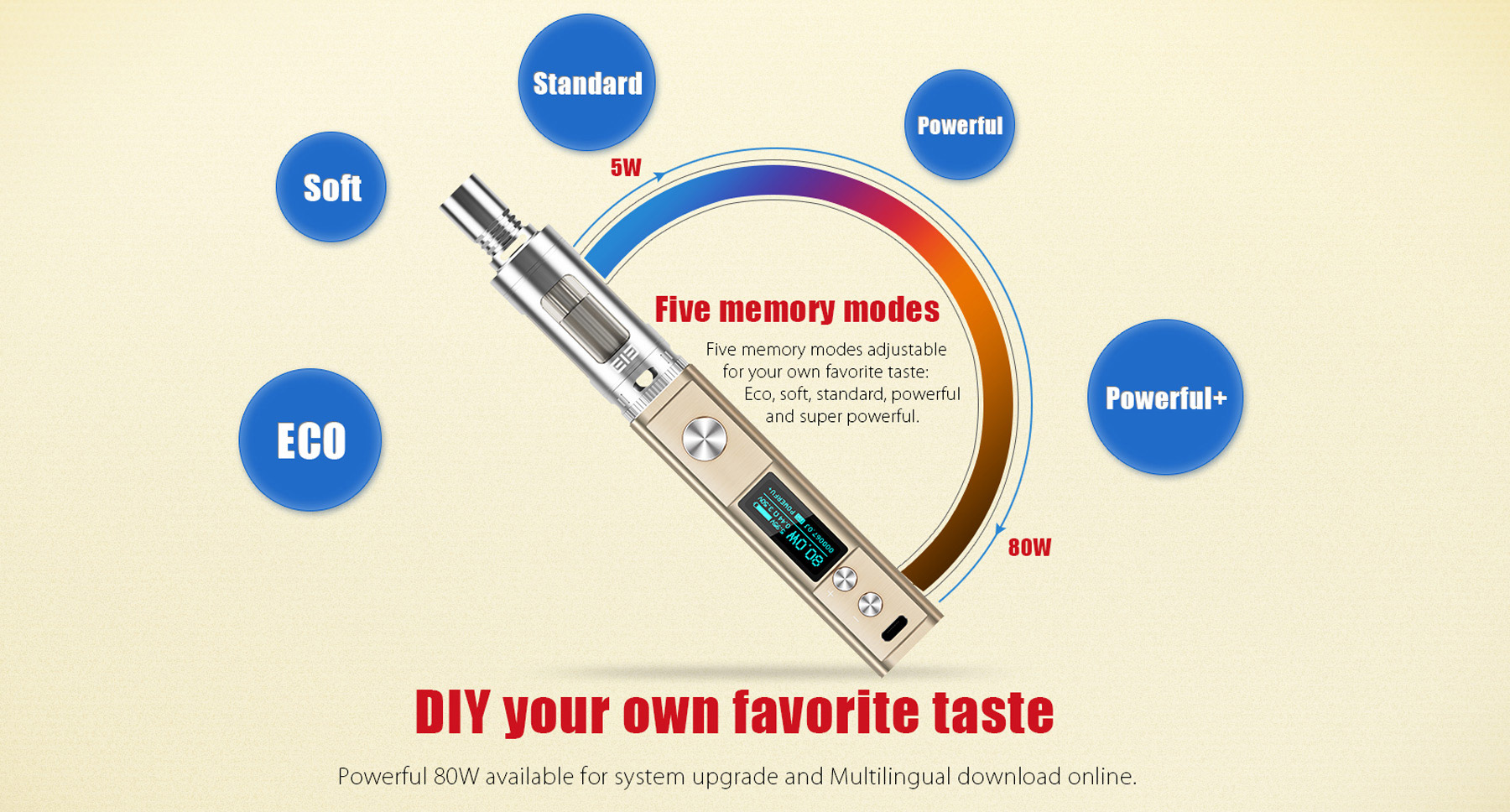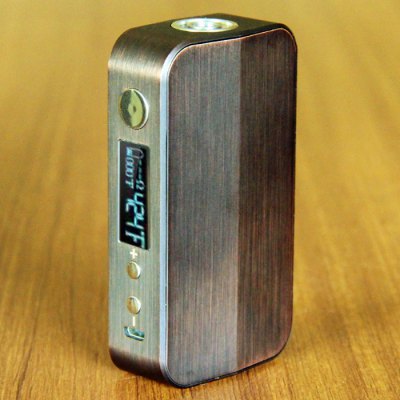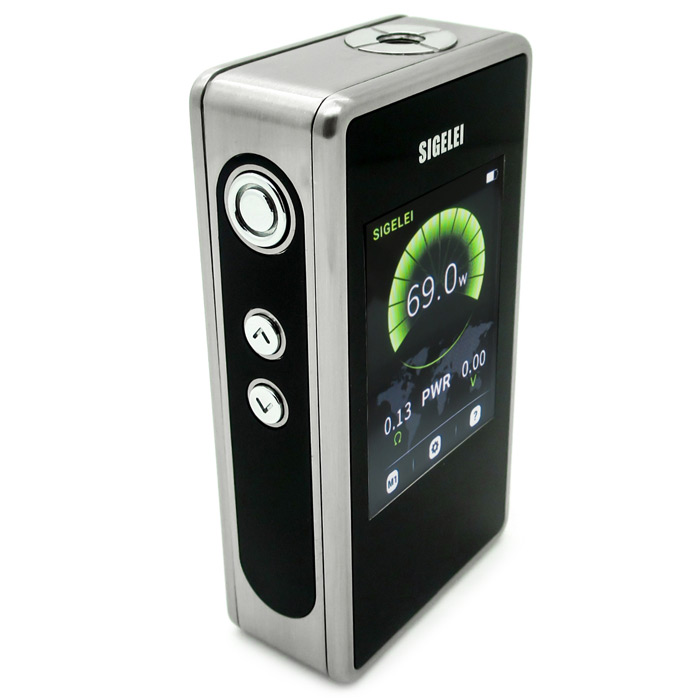Cacuqecig
VU Vendor
VU Vendor
Bronze Contributor
Member For 3 Years
Member For 2 Years
Member For 1 Year
Why Should You Choose TC Mods?

Vaping with TC obviously isn’t as simple as buying a new mod and setting it up for the perfect temperature. You’re going to have to change your coils too, and potentially your atomizer – although the choice of atomizers that take Ni200 or Ti coils is increasing fast, it’s more or less limited to the new generation of sub ohm tanks. So does the new technology justify the cost and learning curve? The short answer is yes, it does, for two reasons.
Firstly, temperature control gives you a more consistent vape. Once you’ve experimented with it a bit, and found the setting you like, it irons out a lot of the variation inherent in vaping. If you want a device that hits the same way every time TC will deliver that – and it will keep on delivering it down to the last drops of liquid in your tank. Many vapers enjoy tinkering with their gear to get the ultimate vape, but plenty more just want a safer, no-hassle alternative to smoking.
The other reason might not actually be the most important, but it’s going to be seen that way by the public health community because it relates to safety. It’s pretty clear by now that the reason some researchers have found high levels of formaldehyde in e-cig vapor is because their experimental technique was causing repeated dry hits. Obviously nobody’s going to keep vaping under those conditions so the real-world risk is very low, but that isn’t how the sceptics see it. As far as they’re concerned, there’s a way to set up a mod so it delivers an unwise dose of formaldehyde.

Using TC neatly solves that problem. Dry hits happen when the ability of the coil to vaporise liquid outruns the wick’s ability to deliver it. Without enough juice around to cool it the coil temperature rises rapidly and what liquid is left – and sometimes part of the wick – gets burned. As any smoker knows it’s combustion that creates most of the carcinogens, so it should be avoided. With temperature control it will be avoided, because as soon as the mod detects a sudden rise in temperature it lowers the voltage to compensate. The coil stays at the correct temperature, the wick is safe and those last droplets get vaporised properly instead of incinerated. With TC, dry hits are a thing of the past.
When temperature control first appeared it was only available with the DNA40 chip, and getting one of those usually meant either buying an expensive box mod or digging out your soldering iron, ordering a chip and giving your old DNA30 device an upgrade. Now it’s very different.
Any decent vape retailer will have TC devices in stock, and while there are still enough expensive ones to satisfy the most dedicated shinyholic there are some much more affordable options too. Your next decision is what sort of atomiser to use. Sub ohm tanks are the fastest-growing sector right now and they’re perfectly suited to TC vaping. Ni200 coils are available in both Kanger Subtank and Aspire Atlantis styles, so there are quite a few tanks out there that will take them. You won’t find them for older tanks though.

While you could try making your own it’s not a great idea. Nickel and titanium are both extremely conductive, and any coil you could make with them that would fit in an Evod head would be sub ohm. Older tanks aren’t suitable for high power vaping, so don’t try this.
It’s a different story with rebuildable atomisers, either drippers or tank styles. Keen vapers have been putting low resistance builds in these for a while now, and if you get some Ni200 or titanium wire you can put together a TC-compatible build. These wires have some quirks though.
If you’re used to winding contact coils, where the wraps touch each other, you’re going to have to get out of the habit. This is bad practice with TC; the mod’s temperature reading is an average across the coil, and if two or more wraps are touching each other they’ll short. That fools the chip into thinking the coil is cooler than it really is, and it’ll crank the power up to compensate.
You’ll probably also have to work with thinner wire than you’re used to, otherwise the resistance will be extremely low, and nickel can be fiddly stuff to work with – it’s quite springy, and can also stretch slightly if you put too much tension on it. Stretching will reduce its diameter and increase resistance, and this can create hot spots on the finished coil. Again, if you enjoy fiddling you’ll have a lot of fun making TC coils. Otherwise a tank with premade heads is probably your best bet.

Vaping with TC obviously isn’t as simple as buying a new mod and setting it up for the perfect temperature. You’re going to have to change your coils too, and potentially your atomizer – although the choice of atomizers that take Ni200 or Ti coils is increasing fast, it’s more or less limited to the new generation of sub ohm tanks. So does the new technology justify the cost and learning curve? The short answer is yes, it does, for two reasons.
Firstly, temperature control gives you a more consistent vape. Once you’ve experimented with it a bit, and found the setting you like, it irons out a lot of the variation inherent in vaping. If you want a device that hits the same way every time TC will deliver that – and it will keep on delivering it down to the last drops of liquid in your tank. Many vapers enjoy tinkering with their gear to get the ultimate vape, but plenty more just want a safer, no-hassle alternative to smoking.
The other reason might not actually be the most important, but it’s going to be seen that way by the public health community because it relates to safety. It’s pretty clear by now that the reason some researchers have found high levels of formaldehyde in e-cig vapor is because their experimental technique was causing repeated dry hits. Obviously nobody’s going to keep vaping under those conditions so the real-world risk is very low, but that isn’t how the sceptics see it. As far as they’re concerned, there’s a way to set up a mod so it delivers an unwise dose of formaldehyde.

Using TC neatly solves that problem. Dry hits happen when the ability of the coil to vaporise liquid outruns the wick’s ability to deliver it. Without enough juice around to cool it the coil temperature rises rapidly and what liquid is left – and sometimes part of the wick – gets burned. As any smoker knows it’s combustion that creates most of the carcinogens, so it should be avoided. With temperature control it will be avoided, because as soon as the mod detects a sudden rise in temperature it lowers the voltage to compensate. The coil stays at the correct temperature, the wick is safe and those last droplets get vaporised properly instead of incinerated. With TC, dry hits are a thing of the past.
When temperature control first appeared it was only available with the DNA40 chip, and getting one of those usually meant either buying an expensive box mod or digging out your soldering iron, ordering a chip and giving your old DNA30 device an upgrade. Now it’s very different.
Any decent vape retailer will have TC devices in stock, and while there are still enough expensive ones to satisfy the most dedicated shinyholic there are some much more affordable options too. Your next decision is what sort of atomiser to use. Sub ohm tanks are the fastest-growing sector right now and they’re perfectly suited to TC vaping. Ni200 coils are available in both Kanger Subtank and Aspire Atlantis styles, so there are quite a few tanks out there that will take them. You won’t find them for older tanks though.

While you could try making your own it’s not a great idea. Nickel and titanium are both extremely conductive, and any coil you could make with them that would fit in an Evod head would be sub ohm. Older tanks aren’t suitable for high power vaping, so don’t try this.
It’s a different story with rebuildable atomisers, either drippers or tank styles. Keen vapers have been putting low resistance builds in these for a while now, and if you get some Ni200 or titanium wire you can put together a TC-compatible build. These wires have some quirks though.
If you’re used to winding contact coils, where the wraps touch each other, you’re going to have to get out of the habit. This is bad practice with TC; the mod’s temperature reading is an average across the coil, and if two or more wraps are touching each other they’ll short. That fools the chip into thinking the coil is cooler than it really is, and it’ll crank the power up to compensate.
You’ll probably also have to work with thinner wire than you’re used to, otherwise the resistance will be extremely low, and nickel can be fiddly stuff to work with – it’s quite springy, and can also stretch slightly if you put too much tension on it. Stretching will reduce its diameter and increase resistance, and this can create hot spots on the finished coil. Again, if you enjoy fiddling you’ll have a lot of fun making TC coils. Otherwise a tank with premade heads is probably your best bet.
